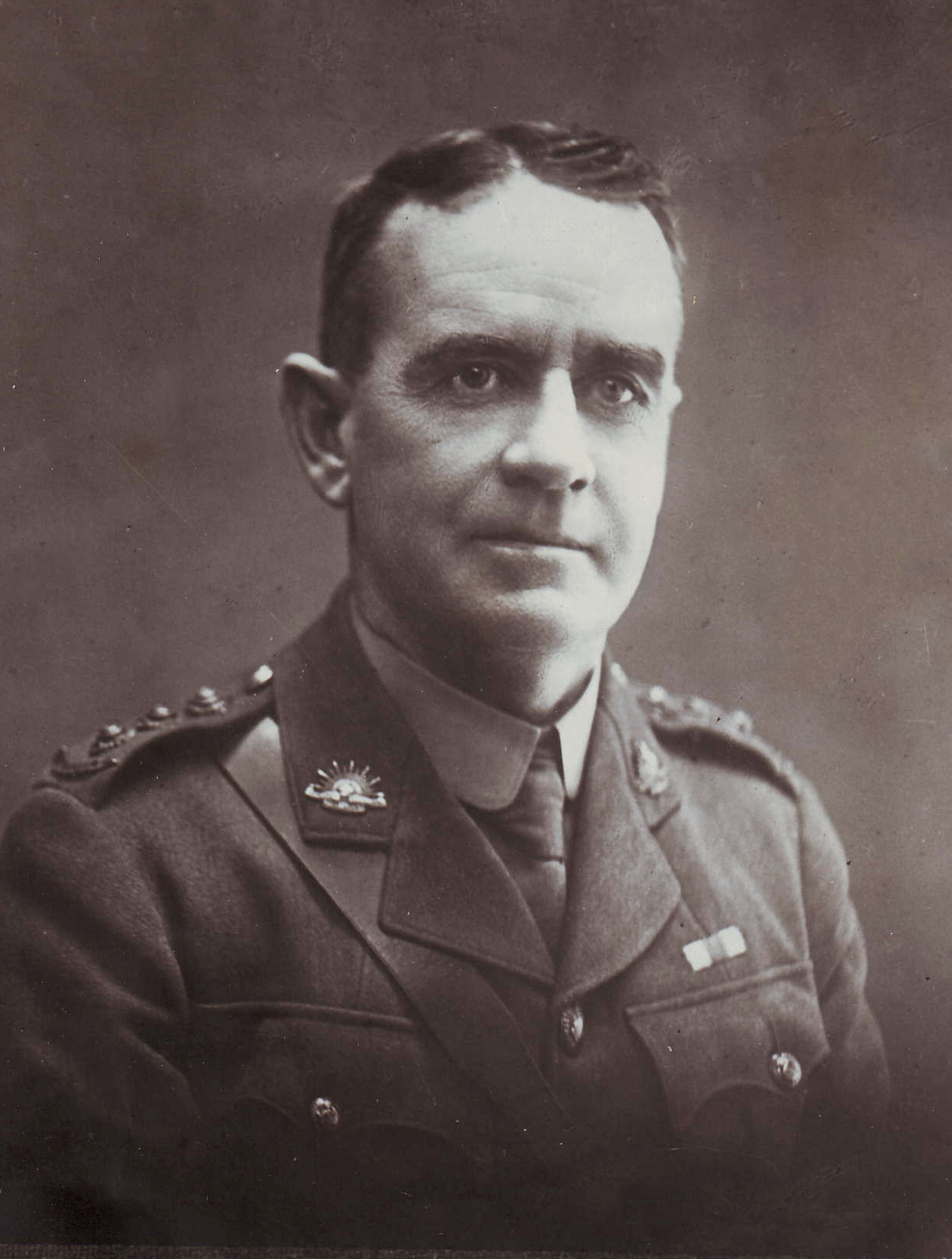|
Bill Denny (Australian Politician)
William Joseph Denny (6 December 1872 – 2 May 1946) was an Australian journalist, lawyer, politician and decorated soldier who held the South Australian House of Assembly seats of West Adelaide from 1900 to 1902 and then Adelaide from 1902 to 1905 and again from 1906 to 1933. After an unsuccessful candidacy as a United Labor Party (ULP) member in 1899, he was elected as an "independent liberal" in a by-election in 1900. He was re-elected in 1902, but defeated in 1905. The following year, he was elected as a ULP candidate, and retained his seat for that party (the Australian Labor Party from 1917) until 1931. Along with the rest of the cabinet, he was ejected from the Australian Labor Party in 1931, and was a member of the Parliamentary Labor Party until his electoral defeat at the hands of a Lang Labor Party candidate in 1933. Denny served as Attorney-General of South Australia and Minister for the Northern Territory in the government led by John Verran (1910–12), ... [...More Info...] [...Related Items...] OR: [Wikipedia] [Google] [Baidu] |
Bill Denny (medical Researcher)
Sir William Alexander Denny (born 5 August 1943) is a New Zealand medicinal chemist, noted for his work investigating drugs for the treatment of cancer. Early life and education Denny was born in Malvern, Worcestershire, England, on 5 August 1943. His parents were Norah May () and Alexander William Denny. The family emigrated to New Zealand in 1946. He received his education at Patumahoe Primary School and Te Awamutu College where he was dux in 1961. At the University of Auckland, he obtained a Bachelor of Science in 1966, a Master of Science in 1967, a Doctor of Philosophy in 1969, and a Doctor of Science in 1986. He had an ICI (Imperial Chemical Industries) post-doctoral fellowship at Oxford University from 1969 to 1972. Career From 1972 to 1979, he was a senior research fellow at the Auckland Cancer Research Laboratory. He was visiting professor at the University of California in San Diego from 1979 to 1981. He then returned to the Cancer Research Laboratory and from 1988, ... [...More Info...] [...Related Items...] OR: [Wikipedia] [Google] [Baidu] |
Parliamentary Labor Party
The Parliamentary Labor Party (also known as the Premiers' Plan Labor Party or Ministerial Labor Party) was a political party active in South Australia from August 1931 until June 1934. The party came into existence as a result of intense dispute, especially within the Australian Labor Party, about the handling of the response to the Great Depression in Australia. In June 1931, a meeting of state premiers agreed on the Premiers' Plan, which involved sweeping austerity measures combined with increases in revenue. When the Premiers' Plan came up for a vote in South Australia, 23 of Labor's 30 House of Assembly members and two of Labor's four Legislative Council members voted for it. In August 1931, the South Australian state conference of the Labor Party expelled all of the MPs who supported the Premiers' Plan, including Premier Lionel Hill and his entire Cabinet. Expelled MPs (23) in the House of Assembly: * Frederick Birrell * Alfred Blackwell *Thomas Butterfield * Clement Col ... [...More Info...] [...Related Items...] OR: [Wikipedia] [Google] [Baidu] |
Lang Labor Party (South Australia)
The Lang Labor Party was a political party active in South Australia from 1931 to 1934, aligned with Lang Labor and the policies of Premier of New South Wales Jack Lang. Establishment It was formed as a result of increasing tensions within the Australian Labor Party over the party's economic response to the Great Depression in Australia. The opponents of austerity in the Labor Party, of which Lang was among the most prominent figures, had supported repudiating Australia's debt, while supporters of austerity policies would subsequently introduce the national "Premiers' Plan" to achieve those ends. The 1931 Labor split occurred both at a state and federal level, with Lang's supporters being known as "Lang Labor". By May 1931, the "Lang Plan Campaign Committee" had been formed in South Australia to give publicity to and campaign for Lang's ideas. Its members were not, at its inception, outside the Labor Party; however, the breach between Lang's supporters and the mainstream party ... [...More Info...] [...Related Items...] OR: [Wikipedia] [Google] [Baidu] |
Military Cross
The Military Cross (MC) is the third-level (second-level pre-1993) military decoration awarded to officers and (since 1993) other ranks of the British Armed Forces, and formerly awarded to officers of other Commonwealth countries. The MC is granted in recognition of "an act or acts of exemplary gallantry during active operations against the enemy on land" to all members of the British Armed Forces of any rank. In 1979, the Queen approved a proposal that a number of awards, including the Military Cross, could be recommended posthumously. History The award was created on 28 December 1914 for commissioned officers of the substantive rank of captain or below and for warrant officers. The first 98 awards were gazetted on 1 January 1915, to 71 officers, and 27 warrant officers. Although posthumous recommendations for the Military Cross were unavailable until 1979, the first awards included seven posthumous awards, with the word 'deceased' after the name of the recipient, from rec ... [...More Info...] [...Related Items...] OR: [Wikipedia] [Google] [Baidu] |
Western Front (World War I)
The Western Front was one of the main theatres of war during the First World War. Following the outbreak of war in August 1914, the German Army opened the Western Front by invading Luxembourg and Belgium, then gaining military control of important industrial regions in France. The German advance was halted with the Battle of the Marne. Following the Race to the Sea, both sides dug in along a meandering line of fortified trenches, stretching from the North Sea to the Swiss frontier with France, which changed little except during early 1917 and in 1918. Between 1915 and 1917 there were several offensives along this front. The attacks employed massive artillery bombardments and massed infantry advances. Entrenchments, machine gun emplacements, barbed wire and artillery repeatedly inflicted severe casualties during attacks and counter-attacks and no significant advances were made. Among the most costly of these offensives were the Battle of Verdun, in 1916, with a combined 700,000 ... [...More Info...] [...Related Items...] OR: [Wikipedia] [Google] [Baidu] |
First Australian Imperial Force
The First Australian Imperial Force (1st AIF) was the main expeditionary force of the Australian Army during the First World War. It was formed as the Australian Imperial Force (AIF) following Britain's declaration of war on Germany on 15 August 1914, with an initial strength of one infantry division and one light horse brigade. The infantry division subsequently fought at Gallipoli between April and December 1915, with a newly raised second division, as well as three light horse brigades, reinforcing the committed units. After being evacuated to Egypt, the AIF was expanded to five infantry divisions, which were committed to the fighting in France and Belgium along the Western Front in March 1916. A sixth infantry division was partially raised in 1917 in the United Kingdom, but was broken up and used as reinforcements following heavy casualties on the Western Front. Meanwhile, two mounted divisions remained in the Middle East to fight against Turkish forces in the Sinai an ... [...More Info...] [...Related Items...] OR: [Wikipedia] [Google] [Baidu] |
1st Division (Australia)
The 1st Division is headquartered in Enoggera, a suburb of Brisbane. The division was first formed in 1914 for service during World War I as a part of the Australian Imperial Force (AIF). It was initially part of the Australian and New Zealand Army Corps (ANZAC) and served with that formation during the Gallipoli campaign, before later serving on the Western Front. After the war, the division became a part-time unit based in New South Wales, and during World War II it undertook defensive duties in Australia before being disbanded in 1945. After World War II, the division remained off the Australian Army's order of battle until the 1960s, when it was reformed in New South Wales. In 1965 it adopted a certification role, determining the operational readiness of units deploying to Vietnam. It was re-formed in 1973 as a full division based in Queensland and in the decades that followed it formed the Australian Army's main formation, including both Regular and Reserve personnel. Th ... [...More Info...] [...Related Items...] OR: [Wikipedia] [Google] [Baidu] |
5th Division (Australia)
The 5th Division was an infantry Division (military), division of the Australian Army which served during the First World War, First and Second World Wars. The division was formed in February 1916 as part of the expansion of the First Australian Imperial Force, Australian Imperial Force infantry brigades. In addition to the existing 8th Brigade (Australia), 8th Brigade were added the new 14th Brigade (Australia), 14th and 15th Brigade (Australia), 15th Brigades, which had been raised from the battalions of the 1st Brigade (Australia), 1st and 2nd Brigade (Australia), 2nd Brigades respectively. From Egypt the division was sent to France and then Belgium, where they served in the trenches along the Western Front (World War I), Western Front until the end of the war in November 1918. After the war ended, the division was demobilised in 1919. The division was re-raised as a Australian Army Reserve, Militia formation during the Second World War, and was mobilised for the defence of ... [...More Info...] [...Related Items...] OR: [Wikipedia] [Google] [Baidu] |
9th Light Horse Regiment
The 9th Light Horse Regiment was a mounted rifles regiment of the Australian Army during the First World War. The regiment was raised in October 1914, and assigned to the 3rd Light Horse Brigade. The regiment fought against the forces of the Ottoman Empire, in Egypt, at Gallipoli, on the Sinai Peninsula, and in Palestine and Jordan. After the armistice the regiment eventually returned to Australia in March 1919. For its role in the war the regiment was awarded fifteen battle honours. During the inter-war years, the regiment was re-raised as a part-time unit based in South Australia, adopting the designation of the "Flinders Light Horse". It was later amalgamated with the 23rd Light Horse to form the 9th/23rd Light Horse, but in late 1941 was re-formed in its own right and converted to a motor regiment during the early years of the Second World War but it was disbanded in early 1943 without having been deployed overseas. In the post war period, the regiment was re-raised as an a ... [...More Info...] [...Related Items...] OR: [Wikipedia] [Google] [Baidu] |
Captain (armed Forces)
The army rank of captain (from the French ) is a commissioned officer rank historically corresponding to the command of a company of soldiers. The rank is also used by some air forces and marine forces. Today, a captain is typically either the commander or second-in-command of a company or artillery battery (or United States Army cavalry troop or Commonwealth squadron). In the Chinese People's Liberation Army, a captain may also command a company, or be the second-in-command of a battalion. In some militaries, such as United States Army and Air Force and the British Army, captain is the entry-level rank for officer candidates possessing a professional degree, namely, most medical professionals (doctors, pharmacists, dentists) and lawyers. In the U.S. Army, lawyers who are not already officers at captain rank or above enter as lieutenants during training, and are promoted to the rank of captain after completion of their training if they are in the active component, or after a ... [...More Info...] [...Related Items...] OR: [Wikipedia] [Google] [Baidu] |
Australian Army
The Australian Army is the principal Army, land warfare force of Australia, a part of the Australian Defence Force (ADF) along with the Royal Australian Navy and the Royal Australian Air Force. The Army is commanded by the Chief of Army (Australia), Chief of Army (CA), who is subordinate to the Chief of the Defence Force (Australia), Chief of the Defence Force (CDF) who commands the ADF. The CA is also directly responsible to the Minister of Defence (Australia), Minister for Defence, with the Department of Defence (Australia), Department of Defence administering the ADF and the Army. Formed in 1901, as the Commonwealth Military Forces, through the amalgamation of the colonial forces of Australia following the Federation of Australia. Although Australian soldiers have been involved in a number of minor and major conflicts throughout Australia's history, only during the Second World War has Australian territory come under direct attack. The Australian Army was initially composed a ... [...More Info...] [...Related Items...] OR: [Wikipedia] [Google] [Baidu] |
University Of Adelaide
The University of Adelaide (informally Adelaide University) is a public research university located in Adelaide, South Australia. Established in 1874, it is the third-oldest university in Australia. The university's main campus is located on North Terrace in the Adelaide city centre, adjacent to the Art Gallery of South Australia, the South Australian Museum, and the State Library of South Australia. The university has four campuses, three in South Australia: North Terrace campus in the city, Roseworthy campus at Roseworthy and Waite campus at Urrbrae, and one in Melbourne, Victoria. The university also operates out of other areas such as Thebarton, the National Wine Centre in the Adelaide Park Lands, and in Singapore through the Ngee Ann-Adelaide Education Centre. The University of Adelaide is composed of three faculties, with each containing constituent schools. These include the Faculty of Sciences, Engineering and Technology (SET), the Faculty of Health and Medical S ... [...More Info...] [...Related Items...] OR: [Wikipedia] [Google] [Baidu] |






